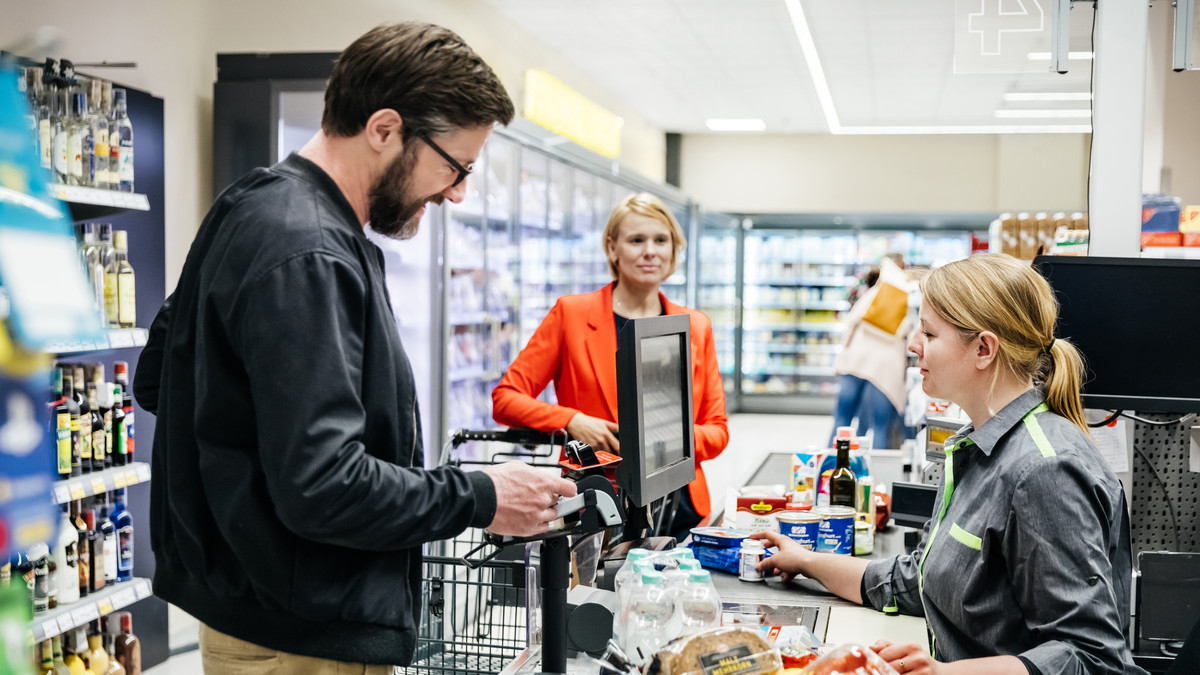Chaos happens. No matter the size of your enterprise or the skill of your staff members—it won’t always be smooth sailing in your grocery store. Still, there’s no need to sink beneath a sea of troubles. With the right approach, you can minimize chaos and (when it does appear) crush it quickly.
To reduce your own operational woes, you’ll first need to know where chaos most commonly occurs in your grocery store and where to expect it in the future. It must be stopped at its origin point.
Below are three of the most commonly encountered pain points in grocery retail today—and how to cure them.
1. Slow checkout lines
THE PAIN POINT:
If your slow checkout lines are creating cranky customers, are you really saving money?
You might be able to find a “budget” grocery point of sale provider to handle in-store transactions, but if all you’re buying is a glorified cash register, you’ll end up paying more for your upfront frugality. The adage “you get what you pay for” applies.
Cumbersome systems that lack an intuitive interface can slow down your grocery retail operation. Consumers that get caught up in a slow checkout line aren’t likely to keep coming back. It may take too long to lookup a customer account or an inventory item, and systems relying on third-party payment processors can slow down transaction processing. If your slow checkout lines are creating cranky customers, are you really saving money?
THE CURE:
In grocery retail, it’s no secret that margins are tight. It’s imperative to manage cash flow well—but that doesn’t always mean that the cheapest solutions are cutting your costs. If your self-checkout kiosks and point of sale terminals are causing chaos, they’re costing you cash. As far as store investments go, your grocery POS platform should take primacy.
You should seek out POS technology that acts as the cornerstone to the rest of your grocery store operations, collecting and collating information to fuel “smart” operations in the back office, on the sales floor, online, and in the supply chain.
Seek out a POS platform that’s based on best practices, not customizations. Your best bet is to install a system that is unified-commerce-capable and backed by a reliable vendor who is established and proven.
2. Out-of-stock and inventory-management costs
THE PAIN POINT:
Stockout or out-of-stock scenarios are costly on multiple fronts. Missed sales opportunities are bad enough, but losing the confidence of your customers may be even worse, resulting in the loss of once-loyal shoppers. If a consumer continues to encounter situations where they feel they’ve had their time wasted, they’ll go elsewhere.
It’s increasingly important for grocers to keep their shelves full—but never too full. Zero-movement items, spoilage, and expired inventory all mean lost profits too. Some stores are carrying tens of thousands of SKUs. Managing a product mix that wide can be difficult and costly.
Lastly, independent retailers often find they don’t have the same purchasing power as big-box stores because they lack adequate supply-chain management. Stores without electronic data interchange (EDI), for example, will have extreme difficulty securing certain product vendors.
THE CURE:
When you’re selecting your grocery POS system, you need to make sure it includes robust inventory automation functions and computer-assisted ordering.
In today’s retail technology market, the cost threshold to achieve EDI capability and perpetual inventory is lower than ever. In an age where customers expect retail experiences in real time, EDI is a critical component in all successful retail platforms, for all successful food retailers—national, regional, and local.
Life for grocery managers becomes exponentially easier when they’ve automated their operations, replacing the time-consuming guesswork of manual purchase orders with an effective inventory management system based on scientific formulae.
3. Blame-shifting silo vendors
THE PAIN POINT:
Most so-called unified commerce platforms … aren’t. If your traditional grocery checkout lanes automatically process a transaction but your mobile application needs to talk to a middleman to do the same—your commerce touchpoints aren’t in harmony.
If you’re running your retail operations on a platform that relies on multiple vendors and integrations, you also have multiple points of failure. When something goes wrong, when a transaction fails, which of these technology vendors will take responsibility?
THE CURE:
Grocery retailers who have implemented a single platform have escaped siloed systems. The solution to this asymmetrical approach to transactions is to ditch the middlemen. You should adopt a commerce platform that uses a single, native transaction logic. Such a system is configured to process all transactions the same, free of additional vendors or “middleware.”
Such a move might seem daunting, but it doesn’t need to be. Even if your current commerce platform leaves you feeling tangled in a web of technical debt, you can escape without sacrifice.
The cure-all
There’s a catch-22 in trying to solve all of these pain points individually; your efforts to crush chaos will worsen if you make your store processes more complex. 21st century retailers must commit to eliminating their reliance on a patchwork of point-of-sale integrations. Instead, you should be looking for a reliable, established technology partner who offers full-spectrum enterprise support.
A comprehensive POS solution backed by such a technology partner will ensure accessible data, free-flowing inventory, faster checkouts, empowered employees, and satisfied shoppers. With your pain points alleviated, you can leverage high-touch customer service, superior transactional experiences, and better product availability (in-store and online) that drives costs down and boosts your customer loyalty.
This article was from Grocery Dive and was legally licensed through the Industry Dive publisher network. Please direct all licensing questions to legal@industrydive.com.
![]()



